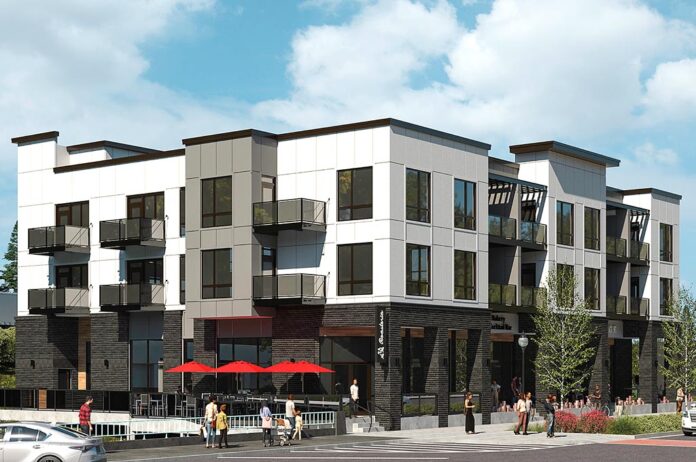Tigard’s Town Center Development Agency last month approved a $300,000 development assistance grant to help AVA Roasteria recover excavation costs that arose after the company discovered a deep field of boulders beneath the surface of its downtown construction site.
While such grants are not unusual, they are typically awarded before the start of a project.
The split 3-2 vote came after lengthy deliberations on the amount as the body heard from AVA owner Amy Saberiyan and city staffers and tried to zero in on a number.
Saberiyan had asked for $400,000, a sum Town Center Advisory Committee chair Tom Murphy and city redevelopment manager Sean Farrelly supported.
“TCAC believes $400k for AVA is proportional to the amount of assistance provided to other market-rate projects, considering their size and the public benefit,” Murphy said. “For other market-rate projects that have received assistance in the TIF district, the amount has varied between $600,000 and $1 million, to my recollection.”
AVA Roasteria’s under-construction development is seen as the cornerstone of downtown revitalization.
The Beaverton-based coffee house chain broke ground last December on a three-story, mixed-use building overlooking Fanno Creek that will house its bakery, main roasting facility, a coffee house, cocktail bar and 22 one-bedroom apartments on the upper floors.
As part of the development, AVA is donating public plaza space along the creek.
Tigard began laying the groundwork a decade earlier, purchasing the half-acre “brownfield” in 2012 and securing an EPA clean-up grant four years later to rehabilitate it.
Redeveloping brownfields – previously developed and possibly contaminated vacant plots like the Main Street site – is part of AVA owner Amy Saberiyan’s company mission.
“This project is crucial to the rebirth of the downtown district,” Murphy said. “It completes the restoration of a formerly contaminated site at a key location at the south end of Main Street. It creates an asset where before there was a liability. It will enhance the real property tax base. This is what urban renewal is supposed to be.”
Saberiyan, who has a doctorate degree in environmental engineering and deep experience in the field, understood she was taking on a complicated site, but what neither she nor the city knew was the land was filled with boulders from just below the topsoil to the water table.
A geothermic analysis contracted by the city before construction failed to reveal the impediment.
“We removed 2400 cubic yards of boulders,” she said. “We had mountains of boulders.”
The hole then had to be backfilled with 3,300 tons of stable foundation materials before construction could start, delaying the project by about six weeks and adding about $400,000 in excavation and material to the price.
She estimates the actual cost adjusted for delays and inflation is closer to $700,000.
“We are past this phase (in construction), but the extra cost hasn’t passed,” she said.
Saberiyan initially secured $9.2 million in funding, the project’s total projected costs, without applying for development assistance from the city.
Mayor Heidi Lueb and Murphy both questioned whether Town Center Development Agency members, who universally voiced support but haggled over the price tag, would have bristled at the amount had the ask come before construction was underway.
Funding already exists for such requests.
“The City Center TIF plan lists development assistance as an approved program,” Farrelly said. “AVA applied for the assistance and scored well on the criteria, including high-quality pedestrian-friendly design, providing equitable economic opportunities, and contributing to place-making and local identity, most notably the donating of a public easement and the construction of a public viewing deck on Fanno Creek.”
Agency members first voted 3-2 against subsidizing $200,000 before approving a $300,000 grant.
Lueb, Maureen Wolf, and Jai Raj Singh voted in favor, while Yi-Kang Hu and Jeanette Shaw, who had both favored the lower amount, voted against.






















